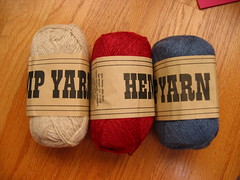 Image via WikipediaBy Joan S Rasch
Image via WikipediaBy Joan S RaschShoppers don't always know what is meant by fair trade. Yet retailers who carry these products are learning that people are quickly becoming informed. And, as this knowledge grows, so does the market. Still, many are left wondering exactly what fair trade is and why it is important to support it.
This article provides a quick synopsis of the concept and the reality of fair trade. Put simply, it is at once a social movement and a market-based method to help producers of goods in developing countries gain more favorable trading conditions. Sustainability is the goal, not simply to make money.
The certification process is an essential component. Producers must meet certain standards. For example, workers, farmers, whoever is engaged in the production of the product must receive payment of a higher price as well as receive decent, sustainable work conditions.
In effect, the goal of fair trade is to positively affect the lives of producers of labor and goods, and therefore attain higher social and environmental standards for these individuals and communities.
If the products carried by a retailer carry an official Fair Trade logo these products have met certain vital criteria. For starters, the standards dictate that employees must receive livable wages and these they must be able to join unions and bargain as a group - collectively.
Forced or child labor is not allowed, obviously. Moreover, specific fair trade standards require that a joint body is set up with representation from both management and workers. This collective body decides on how premiums will be spent to the benefit of employees.
In order for a producer to achieve certification the workers involved in the production of the product must be compensated fairly and their working conditions must offer them a good way to support themselves. Moreover, progressive methods need to be integral to the production process - progress needs to occur over time that impacts the workers positively.
Clearly there are many facets to the story behind these products. As consumers, it is vital that we learn to ask questions about where the products we use come from. We need to seek out such stories and choose to use our purchasing power consciously if we intend to help make a positive change in the world through our shopping decisions.
Fair trade products include clothing, coffee, produce, and an ever-increasing variety of other options. So, the next time you are out shopping, perhaps you can inquire whether these options are offered. You can truly impact other people's lives positively if you take the time to care.
Joan Rasch enjoys writing articles for businesses who are interested in wholesale fair trade products, scarves, bags, wholesale jewelry and clothing. Fair trade products are a result of an organized social movement and market based approach that strives to assist people in developing countries improve trading conditions and promote sustainability.
Article Source: http://EzineArticles.com/?expert=Joan_S_Rasch
http://EzineArticles.com/?What-Is-Fair-Trade-And-Why-Is-It-Important?&id=6832182






